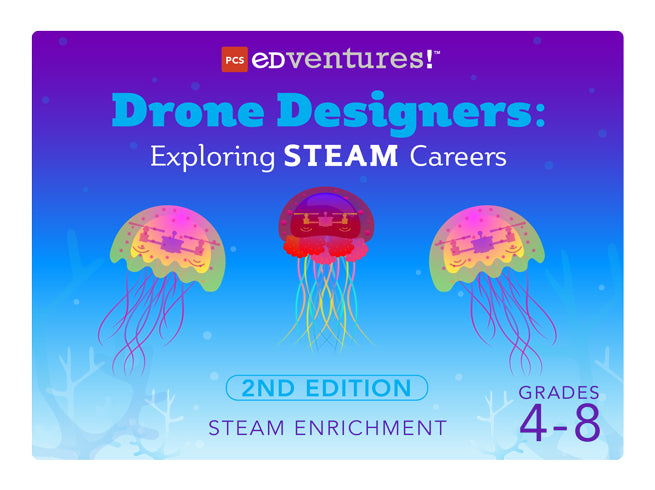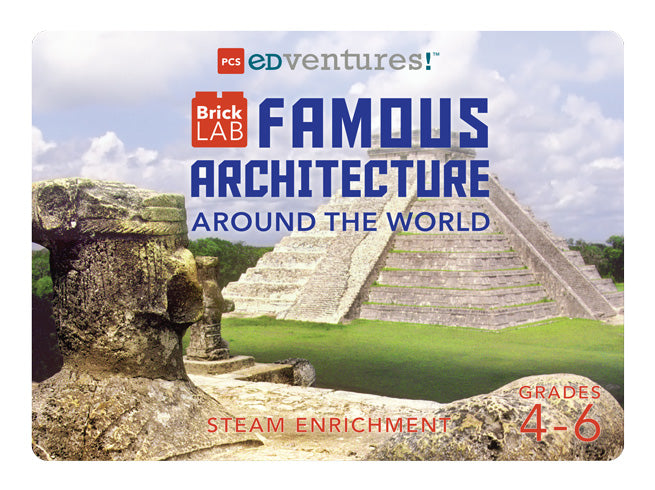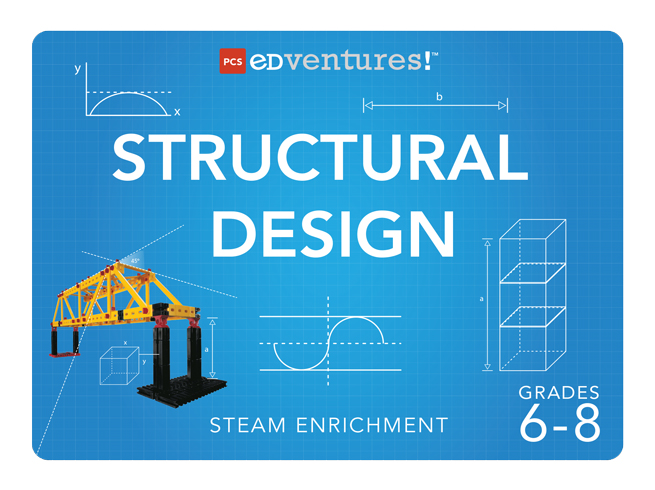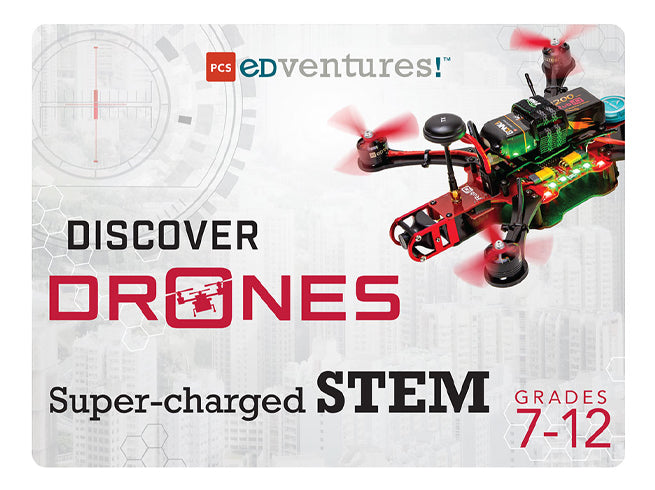
Career Exploration: Engineering
Engineering is one of the cornerstones of STEM and STEAM education and those working within this field understand how diverse and complex this discipline can be. Intertwined with Science, Technology, Arts and Mathematics engineers utilize their understanding of each discipline to design and build works of art. From the Pyramids of Giza to the Golden Gate Bridge, engineers throughout history have contributed to the development of societies around the world.
In Part 4 of our STEAM Career Exploration Series, we're showing students how they can apply their knowledge and skills in Science, Technology, Arts and Mathematics just like Engineers do!
What is Engineering?
Engineering is the understanding and application of science, technology and math to invent, design and create things that solve problems. This includes, but is not limited to, the development of roads, skyscrapers, bridges, machines, tools and even planes. The designs and creations of engineers address society’s needs and problems that work to improve our everyday lives. Over time the field of engineering has evolved and today offers more career choices than any other discipline. With six major branches including mechanical, chemical, civil, electrical, management, and geotechnical engineering and nearly hundreds of specializations to choose from, career exploration is endless! Take a look at the following careers, specializations and subfields of engineering to get a better understanding of what being an engineer could look like.
Exciting Engineering Careers To Explore:
Architect
From elaborate city skyscrapers to the malls we shop at, Architects work hand-in-hand with science and art to design the functional spaces we use daily. As a professional within this field, it is the responsibility of an Architect to ensure that the space being created is not only functional but also safe and economical. From the initial discussion with a client to completion day, Architects tend to be involved in multiple aspects of a project. Due to their high involvement, those within this field must possess excellent communication skills. Architects understand the vision of a client and, in turn, work to explain how this vision will come to life. Being able to articulate complex ideas is important for project success, and a key skill of the world’s leading Architects.

Aerospace Engineer
Aerospace Engineers are creators who design aircraft, spacecraft, satellites and missiles. They also build prototypes that analyze and test their designs to ensure proper functionality. Due to an Aerospace Engineer’s ability to apply the engineering design process to any problem, they often become experts in one or more related fields. The fields they can specialize in include aerodynamics, thermodynamics, celestial mechanics, propulsion and more. Typically, Aerospace Engineers fall into one of two types of engineering: Aeronautical or Astronautical engineering.
- An Aeronautical Engineer is someone who designs and sees to the manufacturing of an aircraft used within the Earth’s atmosphere. This includes commercial and passenger jets, helicopters and even military aviation.
- An Astronautical Engineer is someone who designs and sees to the manufacturing of spacecraft used outside of the Earth’s atmosphere. Their primary role is to understand the harsh outer space environment and how a spacecraft will perform.
Although Aeronautical and Astronautical Engineers face different design and operational challenges, they both understand the science of aerodynamic performance and the principles of physics.

Mechanical Engineer
Dating back to the Industrial Revolution, Mechanical Engineering is one of the oldest and most diverse engineering disciplines. Engineers in this field play an important role in the development, design and construction of a variety of mechanical tools, machines, engines and devices. Some of the most common job functions of a Mechanical Engineer include: product design, research and development, systems management and manufacturing. Someone who specializes in a specific field within Mechanical Engineering could work as a Robotics Engineer or even an Automotive Engineer. But what about a Drone Choreographer?
Verity Studios, a drone production company based in Switzerland, is one company keyed-in on exploring the limits of drones. Combining the world of technology and arts, Verity Studios works to create something people have never seen before using drones. With cutting-edge UAV technology and a passion for the arts, they are changing the world of entertainment as we know it. Steve Maasen, who is a Drone Choreographer for Verity Studios, combines both his mechanical engineering background with his musical background to create stunning drone performances. In his role, he is responsible for programming the flight paths for the drone performance as well as maintaining and improving the choreography tools used at Verity.
I love the fact that I can combine my creative expertise with my technical skills, all while having the opportunity to create something that has never been seen before...It is an indescribable feeling seeing the amazement on people’s faces and hearing the cheers for the drone motions and lights you programmed
Steve Maassen, Drone Choreographer
Civil Engineer
A Civil Engineer is an engineer who designs and oversees the construction of large infrastructure projects such as bridges, roads, dams and water and sewage systems. They are also involved in operation management, construction and project and system maintenance. However, Civil Engineering is much more than just design and construction. Engineers within this field work to understand the surrounding environment and how they can leverage it to solve the everyday problems society faces. Because the world of Civil Engineering is so diverse and complex, the career paths are equally varied. Although there are many common tasks that Civil Engineers partake in on a daily basis, specialization is a key differentiator.
- A Transporation Engineer is someone who plans, designs, operates and maintains systems such as streets and highways. On a larger scale, Transportation Engineers work on projects like airports, ship ports, mass transit systems and harbors. An example of a specialized field within Transportation Engineering is Highway Engineering which focuses on the designs of roads and its relation to pedestrians in order to optimize traffic flow and vehicle safety.
- A Geotechnical Engineer is someone who works to investigate the quality of land and how structures can be constructed within and upon it. They use the practical application of geology to understand Earth’s materials to determine the appropriate support and foundations needed for structures. An example of a specialized field within Geotechnical Engineering is Earthquake Engineering which is concerned with the vibrations of the Earth and how it affects human life. They work to identify areas that are at risk of earthquakes and design and construct techniques to strengthen buildings within the area.
- An Environmental Engineer is someone who creates plans to protect and improve the environment. This specific branch of Civil Engineering is focused on maintaining the quality of air, water and land through sustainable practices. Implementing strategies that help with pollution, is also a key responsibility for those within this field. Much of the work that Environmental Engineers complete involves data and statistical analysis. Unlike other engineering careers, those within this field rarely use design or simulation software. An example of a specialized field within Environmental Engineering is Fire Protection Engineering. A Fire Protection Engineer develops plans and identifies tactics that help reduce smoke and fire damages in houses, commercial buildings and structures throughout cities.
Expand Your Student’s Love for Engineering:
Throughout history, engineers have played a vital role in the development of societies. Without engineers, we wouldn’t have the roads we travel on, the planes we fly in or the homes we live in. Because of Engineers, we’ve been able to experience space exploration, travel cross-country and enjoy works of art like the Eiffel Tower. With so many careers and specializations available in the field of engineering, the opportunities are limitless!
To help you navigate such a complex and exciting field, we’ve hand-picked a few engineering-focused products that are sure to spark your student’s passion! From robotics to UAV drone technology, we’ve got a product for every aspiring engineer in your learning environment!
Follow in the footsteps of the world’s groundbreaking drone designers, weaving together the engineering design process and principles of aerodynamics as learners collaborate to costume, choreograph and code tiny aerial robots in creative performances. Use your imagination, problem-solve and explore STEAM careers through the innovative ways drones are being used for good!
To explore more engineering programs fit for any learning age, click the images below!
Explore the STEAM Series
Designed to help you start those conversations, this series will help you explore a world of careers with your learners. From a career in animation to being a member of a drone production team, the sky is the limit! Join us in this five-part STEAM series as we inspire learners to think about their passions and interests and how they can transform that into a career. Explore each blog installment by clicking the links below:
- Part 1: STEAM Career Exploration
- Part 2: Science
- Part 3: Technology
- Part 4: Engineering
- Part 5: Arts
- Part 6: Mathematics
What are your thoughts?
We’ve given you a peek at what the world of engineering looks like and we want to know what you think! Is there a job we mentioned that stuck out to you? What are some of your favorite landmarks, historic buildings or famous architecture structures you know of? Let us know in the comments below, we’d love to hear your thoughts!
References:
Mowlaee, N. (2019.) The Complete Guide to Aerospace Engineering. Retrieved from https://interestingengineering.com/complete-guide-to-aerospace-engineering
U.S Bureau of Labor Statistics. (2019). Architecture and Engineering Occupations. Retrieved from https://www.bls.gov/ooh/architecture-and-engineering/home.htm
What does an aerospace engineer do? (2020). Retrieved from https://www.careerexplorer.com/careers/aerospace-engineer/
What does an architect do? (2020). Retrieved from https://www.careerexplorer.com/careers/architect/
What does a civil engineer do? (2020). Retrieved from https://www.careerexplorer.com/careers/civil-engineer/
What does a mechanical engineer do? (2020). Retrieved from https://www.careerexplorer.com/careers/mechanical-engineer/
Verity. (2019). Team Verity Spotlight: Steve Maassen. Retrieved from https://veritystudios.com/news/team-verity-spotlight-steve
Verity. (2019). Verity Studios - 2019 Showreel [Video file]. Retrieved from https://www.youtube.com/watch?v=FKOdzb3KTtM

















